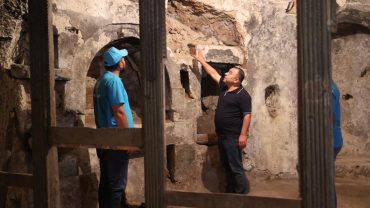
Deep beneath the bustling streets of Istanbul, just a few steps away from the iconic Hagia Sophia and Blue Mosque, lies one of the city’s most mysterious and enchanting historical sites: the Basilica Cistern, locally known as Yerebatan Sarnıcı. This underground marvel combines Roman engineering brilliance with centuries of captivating history, making it a must-visit destination for anyone interested in Byzantine architecture, ancient water systems, and Istanbul’s hidden history.
History of the Basilica Cistern
The Basilica Cistern was constructed in the 6th century during the reign of Byzantine Emperor Justinian I (527–565 AD). Its purpose was both practical and strategic — to store and supply water to the Great Palace of Constantinople and other nearby buildings, especially during sieges or times of drought.
It is called the “Basilica” Cistern because it was built beneath a large public square or basilica. Over time, it became one of the most important water reservoirs in ancient Constantinople, showcasing the sophisticated water engineering techniques of the Byzantine Empire.
Architectural Features and Structure

The cistern is a vast underground chamber, measuring approximately 138 meters long and 64.6 meters wide, with the capacity to store over 80,000 cubic meters of water. It is supported by 336 marble columns, each about 9 meters high, arranged in 12 rows of 28 columns.
Each column is unique, taken from older Roman structures, which adds a rich blend of recycled architectural heritage. Two of the most famous columns feature the mysterious Medusa heads, believed to have been placed to ward off evil spirits or simply reused from pagan temples.
The entire cistern was built using brick vaults, a common feature of Roman engineering, and the water was transported through a complex system of aqueducts originating from the Belgrad Forest — nearly 19 kilometers away.
Cultural and Historical Significance
The Basilica Cistern was forgotten for centuries after the Ottoman conquest of Constantinople in 1453. It was rediscovered in the 16th century by a Dutch traveler, Petrus Gyllius, who noticed that local residents could draw water — and even catch fish — from their basements.
Over the years, it has been cleaned, restored, and opened to the public, now serving as a historical attraction and cultural venue, hosting art exhibitions, concerts, and film scenes (including James Bond: From Russia with Love).
Why You Should Visit Yerebatan Sarnıcı
- Step into a mystical atmosphere: Dim lighting, classical music, and the reflection of the columns on the water create an unforgettable ambiance.
- Experience ancient engineering: See firsthand how the Byzantines mastered the use of space, architecture, and hydrology.
- Marvel at the Medusa columns: These mysterious heads have inspired myths, stories, and countless photos.
- Learn about Istanbul’s layers of history: The cistern is a window into a time when the city was known as Constantinople.

Legacy and Modern Importance
Today, the Basilica Cistern stands as a reminder of Istanbul’s strategic importance throughout history and the genius of its ancient civilizations. It continues to attract millions of visitors each year, adding cultural, educational, and economic value to the city.
Whether you’re a history enthusiast, architecture lover, or curious traveler, Yerebatan Sarnıcı is a place where the past literally lies beneath your feet.



Comment (0)